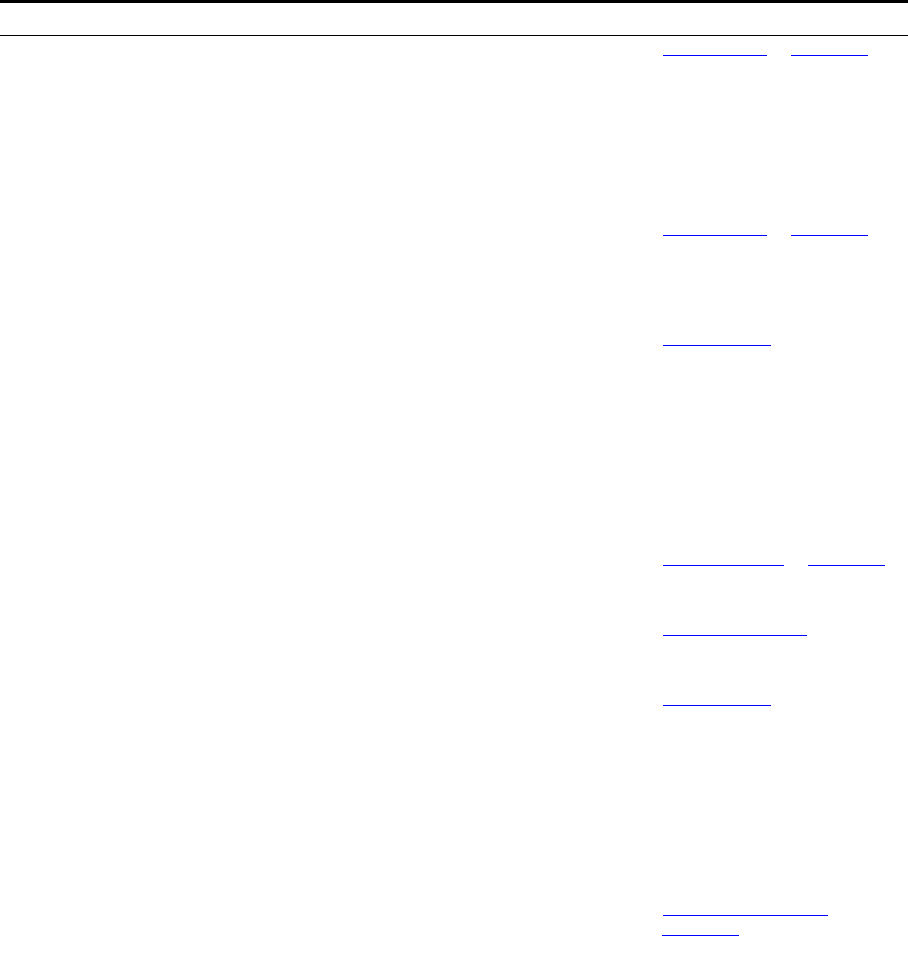
74 CHAPTER 6: PERSONALIZING YOUR TELEPHONE
PG 482–531
(PG 500-531 on
NBX
100)
Press this button to pick up a call on any extension in the
selected Pickup Group without dialing the Pickup Group
extension. Your telephone and the ringing telephone must
be part of the same Pickup Group unless the “Allow
Non-Member Pickup” check box is enabled for the group.
To do this you must first identify a specific Pickup Group
extension and assign it to this button. If you are unsure
what extension to use, ask your administrator.
“Call Pickup” in Chapter 7
Pickup Group Press this button and dial the Pickup Group extension to
pick up a call on any extension in the associated Pickup
Group. Your telephone and the ringing telephone must be
part of the same Pickup Group unless the “Allow
Non-Member Pickup” check box is enabled for the group.
“Call Pickup” in Chapter 7
PSD 1–99
(PSD 1-10 on NBX 100)
Assigns a Personal Speed Dial (PSD) number to the button.
The NBX system includes 100 Personal Speed Dials (PSDs).
For the NBX 100, you can map the first 10 personal speed
dials using the Button Mappings window. To map the
remaining 90 personal speed dials, use the Other button
mapping, described earlier in this table.
You define the telephone numbers for each PSD in
Directory > Personal Speed Dial in the NBX NetSet
utility.
“Speed Dials” later in this
chapter
Redial On a 3Com Basic or Entry Telephone, press this button to
place a new call to the same number as the most recent call
made from this telephone.
“Dialing a Call” in Chapter 5
Release Press this button to disconnect the current call and leave
the telephone idle (on hook). This feature is useful if you
use a headset when you make calls.
“Using a Headset” later in this
chapter
SSD 0–99
(SSD 1–10 on NBX
100)
Assigns a System Speed Dial (SSD) number to the button.
Both the SuperStack 3 NBX and the NBX 100 system
includes 100 System Speed Dials (SSDs), which can be
programmed by the administrator (NBX NetSet System
Configuration - Speed Dials).
For the NBX 100, you can map the first 10 system speed
dials using the Button Mappings window. To map the
remaining 90 system speed dials, use the Other button
mapping, described earlier in this table.
“Speed Dials” later in this
chapter
Switch to DTMF Press this button to switch this Analog Line Card port from
pulse dialing to tone dialing (DTMF). You cannot switch
from tone dialing back to pulse dialing during a call.
“Using Pulse Dialing” in
Chapter 7
Table 8 User Button Mappings (continued)
Function Button Description For more information, see
